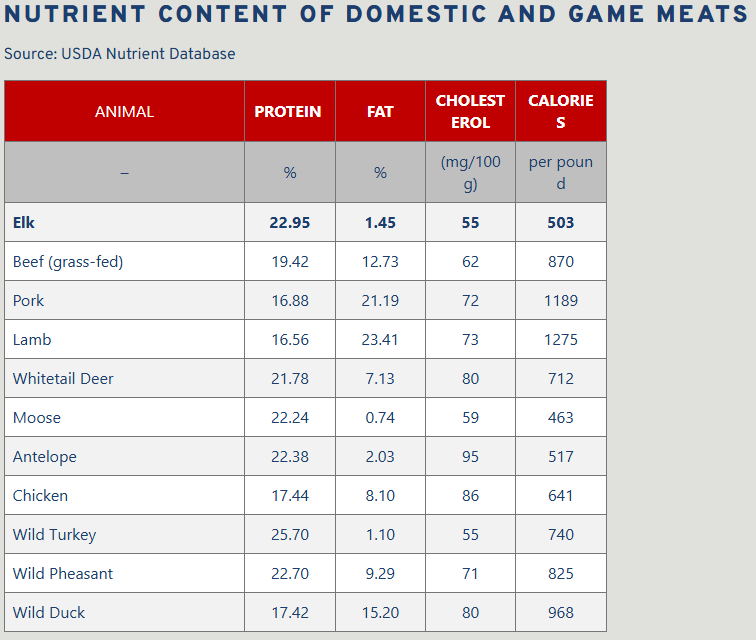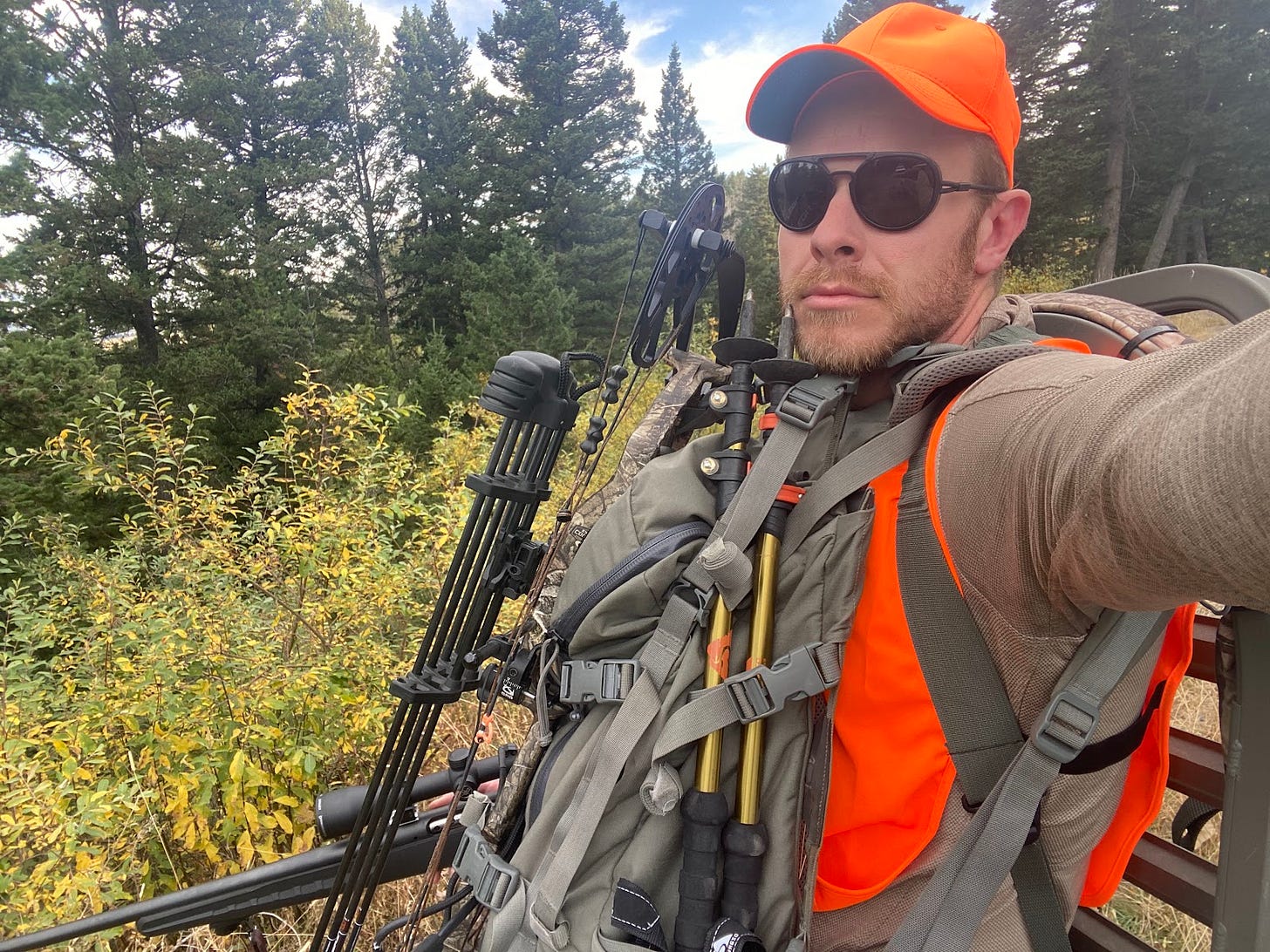Read time: 11 minutes
Good morning, 66.1ers.
This week’s overview
A behind-the-scenes look at a quest for the world’s cleanest protein
A look at just how hard it is to harvest your own meat
Click play on the video above if you prefer to listen
Housekeeping
Full access to today’s post and podcast is reserved for members of 66.1.
Become a member to get full access to this post and all future Saturday Deep Dive posts.
Members also have access to 66.1 community chat and comments, monthly Q&A issues, and collections of the wisest insights from the 66.1 community.
Background
You’ve heard me ranting and raving about the importance of protein. You need 1.3 grams per kilogram of body weight. It’s critical for maintaining muscle mass, especially as you age.
You’ve also heard how not all protein is created equal. Beyond Burgers are essentially a science fair experiment to see if you can grind up a bunch of plant matter and somehow make it resemble a hamburger. The answer is yes, but it’s not going to have the same nutritional value as a patty of grass-fed lean meat.
Wild-caught salmon trumps farm-raised salmon every time. Grass-fed beef beats conventionally raised beef in the nutrition department.
And on and on.
But all this science-y stuff starts to feel a bit stale after a while. So this week, we’re going to take a behind-the-scenes look at what’s an ongoing quest for 5+ years: harvesting the cleanest protein I can find.
Thanks to the help of a few good friends and some long days in the mountains, we now have a freezer filled with elk and deer meat. It’s one of the more satisfying moments I’ve experienced.
I’m sharing this piece today because it’s rare that we understand how difficult it is to get truly clean protein in our diets.
And in case you’d like some data to justify the quest that follows, try this chart from the Rocky Mountain Elk Foundation:
Step 1: The Decision
Anything that’s hard and worthwhile starts with a decision to do the thing. I can trace the decision to harvest my own meat back to the early days of the 2 years I lived in Zambia as a Peace Corps Volunteer.
You see, in the village, meat doesn’t just show up in a nice vacuum sealed package. There’s no refrigeration because there’s no electricity (when I lived there, anyway–I suspect that may have changed since). No refrigeration leaves you with 2 options:
Don’t eat meat
Beans and other legumes take you only so far when you’re subsisting just on the crops your family can grow by hand, though.Harvest your own meat
In our village, this was most commonly done through fishing. Butchering one of your chickens was reserved for special occasions, and butchering a goat was even more rare. Most families had 10-15 chickens and 2-3 goats at any point in time. No one had cows–there wasn’t enough land to graze in this area.
After participating in a few harvests of my host family’s and then my own chickens, I came to see that meat isn’t to be taken for granted. It’s hard work to raise a chicken from egg to adult (6+ months) then harvest it with your own hands. And you could see the difference between these “village chickens” versus “broilers” (the fat white chickens you would buy for meat)--the meat was darker and chewier, the bones harder. I’m very willing to bet they were healthier, too.
Quickly, the convenience of grabbing a package of chicken breasts off the shelf at your local grocery looked like one of the most ludicrous ideas out there. The thing about food is it’s not supposed to be convenient. It’s perhaps the hardest thing in the world to come by.
At this point, I committed to raising and harvesting my own meat for the rest of my time in Zambia and when I returned home to the US. It’s taken 5+ years, but we’re getting there. I grew my own flock of chickens to 50+ before leaving Zambia, harvesting one every few weeks for dinner with my host family or friends.
Step 2: A lot of practice
When I returned home to the US, I joined my friend Connor for some whitetail deer hunts on his family farm. None of these hunts yielded meat, but I learned plenty about just how hard it is to actually harvest a wild animal. You’ve got to wake up way before sunrise so you can be in position before the animals return to their beds for the day. You’ve got to position yourself downwind from the animal so they can’t smell you. And then you’ve got to make the shot when the opportunity presents itself. We saw plenty of animals and I even shot and missed with my bow and arrow once.
In the fall of 2023, I joined my brother for a cow elk hunt in southern Idaho. Neither of us knew the terrain well, but we saw an opportunity for an adventure (and hopefully a full freezer). We spent 5 days driving a lifted Toyota 4Runner on the worst roads you can imagine, running up and down mountains, and freezing our butts off. We found elk, but never got an opportunity for a shot. A great adventure, but still no meat in the freezer.
When my girlfriend and I moved to the mountain west exactly one year ago today, I planned to hunt hard. I even wrote “hunt with a guide/similar” (/similar because I knew a $10,000 trip with an outfitter was out of my price range) as a New Year’s Resolution for 2024.
As life would have it, I met some pretty cool people who quickly filled that “guide” role when September rolled around and archery season began. My friend Andy worked as an elk hunting guide in a previous life. My friend Chase grew up hunting whitetail deer. Over the course of fall 2024, I was fortunate to tag along for a number of hunts with these two.
All that stuff about waking up early and getting your wind right still applies in the mountains. But then you also have to be in great physical shape so you can carry a 30-lb backpack for 15 miles per day. And if you harvest an animal, that backpack quickly jumps into the 100-lb range.
All fall, I’d hunt as hard as I could on my own, pursuing an idea (i.e. whitetail does on a certain property, etc.) until I couldn’t see the next step. When I ran out of ideas, I’d talk with Andy and Chase. They’d suggest what to do differently and I’d iterate.
On one particularly memorable mission, they suggested I hunt a black bear. The kicker with this hunt, though, was that there’s an overlap between fall bear hunting with a rifle and fall elk hunting with a bow and arrow. It’s also a good idea to hunt a bear from a tree stand if you know its pattern (to avoid hand-to-hand combat). So I carried a bow and arrow, a rifle, and a tree stand 2.5 miles through the forest, bushwhacking the entire time.
I made this trek a few more times, but no bear.
As for the tree stand?
It’s still out there.
A project for this spring, once the snow melts.
Listen to this episode with a 7-day free trial
Subscribe to 66.1 to listen to this post and get 7 days of free access to the full post archives.

















